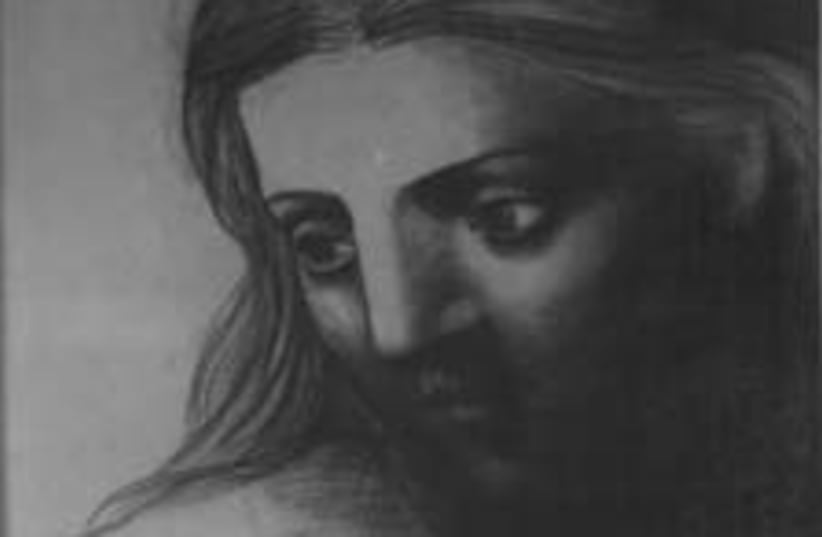Klimt's girls
Klimt's favorite subject was the sexual woman, tall creatures with strongly sculptural faces, but some of the oils are of naked Danaes bent in highly charged poses.
RONALD LAUDER'S Neue Galerie occupies a lovely old house on East 86th Street at Fifth Avenue, built in 1914. It is devoted to shows of German and Austrian expressionists. The museum was the brainchild of both Lauder and the late, great autodidact and art dealer Serge Sabarsky.
Most of the many drawings in its current show devoted to Gustav Klimt (1862-1918) are from Sabarsky's collection. Many, including the detailed studies of young ladies masturbating, have been seen before at this venue. So have nearly all the Klimt oils on view, beautifully composed squares of canvas depicting the homes hidden among the foliage at the shore of Lake Attersee, where Klimt spent summers with the love of his life, the Jewish fashion designer Emilie Floge.
But the real reason for the show is its centerpiece, Klimt's wonderful portrait of his charming Jewish patron, Adele Bloch-Bauer, for which Lauder last year paid the highest price ever for any painting. The lovely sitter, seen from below, is encased in a huge tapestry of decorative rectangles of impasto, much of them in gold, a color that Klimt affirmed one could not have too much of.
Klimt's favorite subject was the sexual woman, tall creatures with strongly sculptural faces, but some of the oils are of naked Danaes bent in highly charged poses. Once a leader of the Vienna Secession, Klimt in summer painted and relaxed at the Attersee, a lake where he kept a motor skiff. In a series of photographs he is seen wearing a floor-length painting smock. All of these were dyed in indigo and were evidently designed by Emilie; in this show one of them hangs royally next to a recreation of his studio, the furniture designed by Josef Hoffmann. The smock looks new, unmarked by any speck of paint.
Klimt died of the Spanish flu that killed millions of Europeans who had survived the Great War. It also killed another admirer of sexy young females, Klimt's brilliant young protégé, Egon Schiele.
FIVE BLOCKS down Fifth Avenue, on 79th Street, are two upmarket galleries occupying lovely old town houses that are well worth a visit. At Acquavella Contemporary Art, sometime veteran Pop artist James Rosenquist shows Time Blades, large semi-illusionist oils dealing with notions of time via clock faces and time numbers rendered in multi-spatial perspective. As usual, Rosenquist gets an A for effort, but his elaborate compositions do not tell us anything new about painting. He remains just an imaginative renderer of subject matter.
While the Rosenquist show had been worth the visit, it wasn't until I went upstairs to see Acquavella's latest group show, From Toulouse-Lautrec to Freud, that I was really staggered. Every single one of the 33 works on paper was a gem, and the finest jewel of all was an outsize neo-classical head drawn in charcoal by Picasso in 1921, arguably one of the best of his drawings. The massive yet sensitive head is a mixture of tone (carefully smudged charcoal) and flowing expressive line. Bewitched, I returned to examine it again and again.
Degas, Renoir, Cezanne, Derain, Matisse, Toulouse-Lautrec, Miro, Franz Kline, Lucian Freud and Diebenkorn are the stars of the collection. Well worth a visit.
IN A neighboring house is the Rosenfeld Gallery, which houses a very seeable collection of modern art for sale. Of particular note was a wonderful little abstraction of a series of brush strokes painted by the late Roy Lichtenstein, offered at $1.25 million; and a good Dubuffet.
THE AMERICAN Museum of Natural History, across Central Park on Park West, is a fascinating place if you are interested in the development of the vertebrates and love dioramas of African mammals. But this huge and hoary building needs a major rethink. It has a bad effect on its crowded new show, Mythic Creatures, anyway one that will hardly excite the kids who have seen the Harry Potter movies.
Australia's bunyips and the Nasca killer whales on pre-Columbian pottery are seen next to faux mermaids and other creatures of the deep. There are mockups of unicorns, griffins, giants and a Cyclops; and even Bigfoot. Pegasus, the winged horse, has sprung from a carousel, the phoenix rises from the ashes and Asian dance dragons vie with menacing European ones. It's all part of the evolution of fantasy, but it's not worth the extra $18 over the general entrance fee.
if(catID != 151){
var cont = `Take Israel home with the new
Jerusalem Post Store Shop now >>

